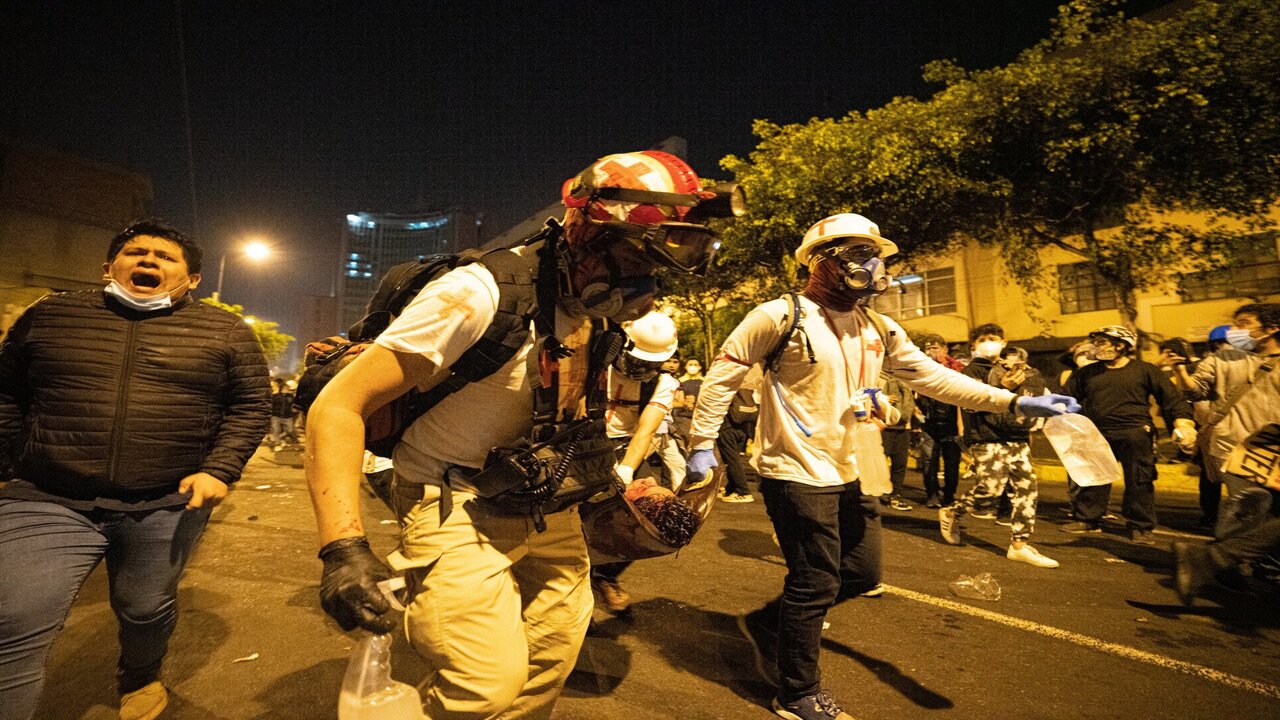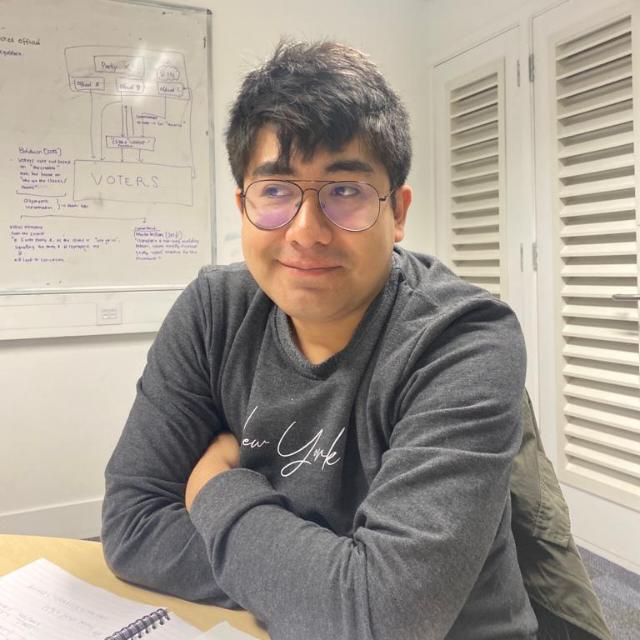The Crisis in Peru: Political Causes and a Necessary Police Reform
Published:
“In a full democracy, no one should be injured or die for protesting.”

Between November 9th and 16th, 2020, the conflict between the Peruvian Executive and Legislative branches reached its peak, resulting in a total political crisis. In just eight days, Peru witnessed three presidents, five cabinet changes within six months, and a whole day where the positions of President of the Republic and President of the Congress remained vacant due to resignations, leaving the country without heads of its two powers. All this occurred months before the General Elections scheduled for April 11, 2021, amidst the global health crisis caused by COVID-19, which had already affected 948,000 people, led to significant job losses, and overwhelmed the healthcare system.
The political crisis that unfolded that week was the culmination of ongoing struggles between the Executive and Legislative branches. Since 2016, the election of Pedro Pablo Kuczynski as President established a presidency with minority parliamentary support. While the ruling party secured 18 seats, the opposition occupied 73 out of 130 seats in a unicameral congress.
In presidential systems in Latin America, as Juan Linz warned, a presidency lacking support in the legislature, coupled with conflict between the Executive and Legislative branches, could lead to the President’s removal (resignation, coup, vacancy). Peru was no exception, and two years into his term, Kuczynski resigned from the presidency after facing two attempts at impeachment for moral incapacity by the Legislative, leaving his first vice president, Martín Vizcarra, as his successor.
Vizcarra’s government inherited the parliamentary shortcomings of his predecessor but advocated for an anti-corruption stance that resonated with citizens and allowed him to enact certain reforms. These reforms included the 2018 Referendum that abolished parliamentary re-election and the creation of the High-Level Commission for Political Reform. However, conflicts between the branches resurfaced. Amid irregularities in the appointment of new members to the Constitutional Court by the Legislature, the Executive used a vote of confidence for this procedure. Upon the Parliament’s refusal, which proceeded with the appointment, the Executive, in accordance with the Constitution, closed the predominantly Fujimorista Congress on September 30, 2019, and called for new elections on January 26, 2020.
Vizcarra managed to create a more favorable scenario as the opposition, which had complicated various public policies, lost its substantial majority. However, in the 2020 electoral process, the head of the Executive did not present or support any parliamentary list. Whether due to failed negotiations or lack of interest, Martín Vizcarra found himself once again without support in Parliament, and the new configuration of the legislature did not guarantee political stability. Thus, the vacancy due to moral incapacity, with the concept’s inherent emptiness, emerged again as a political instrument to remove Vizcarra from the presidency.
A renewed investigation into alleged bribes during Vizcarra’s tenure as a regional governor prompted the first call for vacancy by congress members. Although Vizcarra survived the initial vote, the leak of chats allegedly implicating him further in the case triggered a second vacancy request and vote. In his defense during this second vote, Vizcarra was less conciliatory with Congress and directly confronted the lawmakers. Statements like “It has been made public that 68 congressmen are under investigation by the Public Ministry. Should they also leave their positions without the investigation being concluded?” ultimately eroded support from a large portion of the parliamentary groups. Thus, with 105 votes out of 130, Vizcarra’s presidency ended, and Manuel Merino, the then-President of Congress, assumed power.
The decision to remove Vizcarra and the succession by a relatively unknown congressman leading a highly criticized Congress triggered protests at the national and international levels. It is essential to note that, in many cases, these protests were not explicitly in support of the ousted President Vizcarra. Instead, the majority of protests were focused on defending democracy, as the vacancy was seen as a coup.
However, the debate on the legality of the vote loses relevance in light of subsequent events. Manuel Merino’s swearing-in on November 10, his Prime Minister Antero Flores-Aráoz on the 11th, and the selection of a right-wing and less conciliatory cabinet only fueled more protests. In this context, the Peruvian police displayed all its deficiencies as an institution. Instead of protecting citizens and ensuring that violence did not escalate, they intervened in peaceful marches, repressing protesters exercising their right to protest.
By November 11, congress members Alberto de Belaúnde and Rocío Silva warned of excesses and violence by requesting the presence of the National Police General, Jorge Lam, in the Congressional Justice Commission. The proposal was rejected by the majority, and two days later, the newly sworn-in Prime Minister visited a police delegation to commend the agents’ actions amid ongoing national marches. This support from Flores-Aráoz was accompanied by the Executive’s promulgation, led by Merino, of Law 31012 that exempts National Police officers who injure or kill civilians from criminal liability.
These two specific actions by the Executive ended up ensuring a degree of impunity. In the following days, police actions only escalated in violence. The use of tear gas, firearms, undercover police at demonstrations, and irregular detentions occurred with alarming regularity. Among these incidents, the case of Javier Mollo Fuentes and his partner Ana de la Cruz stands out. They were detained while working in their printing shop in downtown Lima, allegedly printing posters against Merino, which, according to both of them, had been commissioned by the same undercover police officer. Upon their release, 22-year-old Ana de la Cruz reported having been subjected to undue touching and acts of sexual violence by the police in the basement of the Criminal Investigation Directorate (DIRINCRI).
Violence against protesters persisted, and on the night of November 14, the deaths of university students Jack Pintado and Inti Sotelo, aged 22 and 24 respectively, were confirmed. Pintado received eleven lead pellet impacts, while Sotelo received four. Their deaths further fueled public outrage and demands for Merino’s resignation from national organizations, political parties, and Congress members. Following his resignation, and after various negotiations between parties that highlighted the inability to reach consensus, Francisco Sagasti was elected President of the Congress on November 16, and the following day, he assumed the Presidency of the Republic.
As Peru approaches its bicentennial of independence, the political crisis reveals significant deficiencies in its institutions and political system. The events of that week in Peru underscore the need for political reform that restructures the balance of power and enables a certain degree of governability in presidencies with parliamentary minorities. However, even more critical is a comprehensive reform of the Peruvian Police. According to information gathered by Ojo Público, the marches resulted in two young deaths, 250 people with various injuries (including protesters, volunteer paramedics, and journalists from national and international media), irregular interventions by citizens, and the several-day disappearance of others. The actions of the National Police of Peru during the protests demonstrate that this institution does not serve the citizen but rather the ruling power. In the future, will the police protect democracy, or will they merely follow orders, even if they violate the rights and dignity of Peruvians? A complete overhaul of this institution is of crucial importance, along with investigating and prosecuting those directly responsible for the deaths of Jack Pintado and Inti Sotelo and the rest of the affected citizens. In a full democracy, no one should be injured or die for protesting.

Leave a Comment